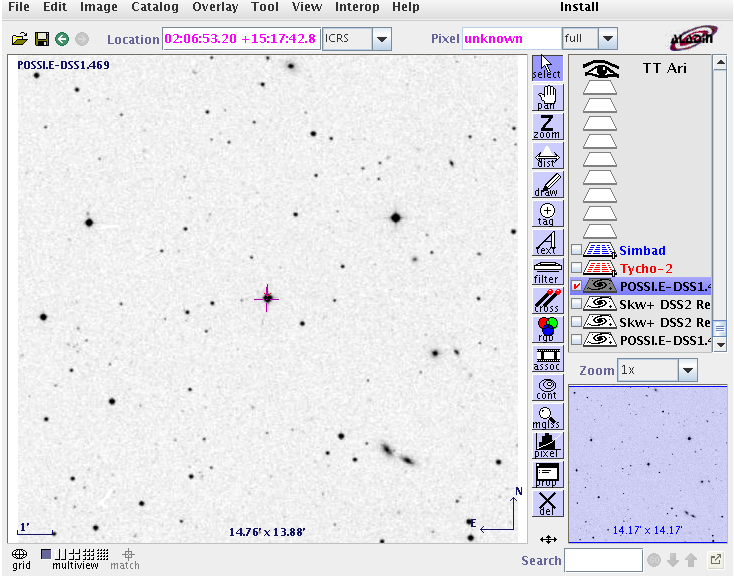
On the night of Nov 17/18, 2009, I tried (but failed) to observe the strange variable star TT Ari with the 12-inch telescope in V-band. With Roger Easton's help, I set up the 14-inch telescope with a smaller telescope riding piggyback, and collimated the 14-inch. The night was clear, but very cold and a bit breezy.
The setup was:
Notes from the night
When I made a finding chart for this star, I was misled by its brightness on the DSS2 photographic plates. As a result, I chose an exposure time (10 seconds) and filter (V) combination which was much too short to measure the light from the star. Here's the chart I used -- note that TT Ari (marked by the crosshairs and arrow) appears to be one of the brightest stars in the field.

However, last night, TT Ari was much fainter --- about as bright as the two stars to its left. This is a more accurate representation of its appearance last night ...
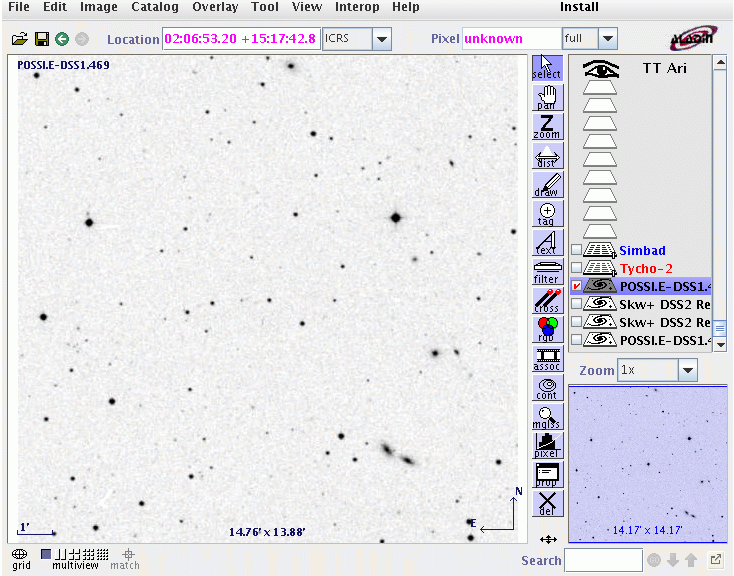
as you can see when you compare it to a composite of ALL my images -- 600 exposures, each 10 seconds -- from last night:
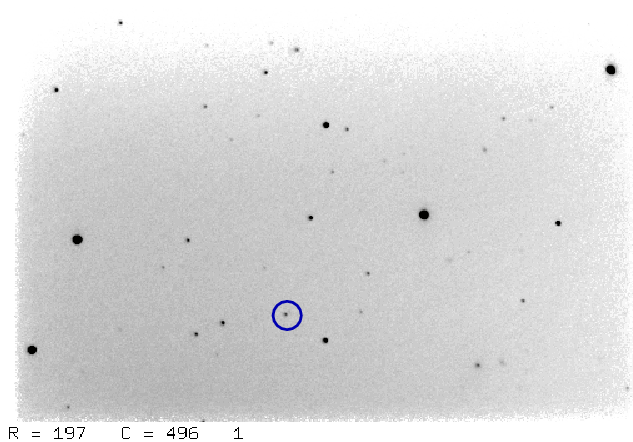
Even after combining the images into groups of 6 via a median procedure to create an effective exposure time of 60 seconds, TT Ari was still much too faint for me to measure its brightness accurately.
Oh, well.
The 14-inch Celestron now has a partner: an Orion 90mm f/11 refractor, mounted piggyback with the help of Losmandy dove-tail plate and rings.
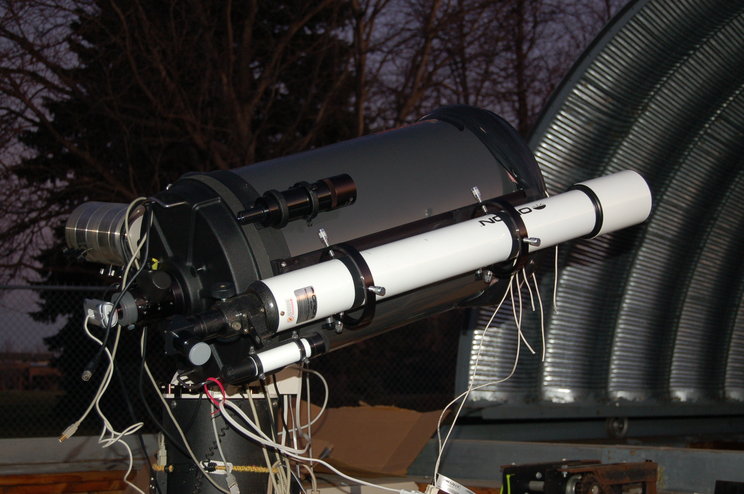
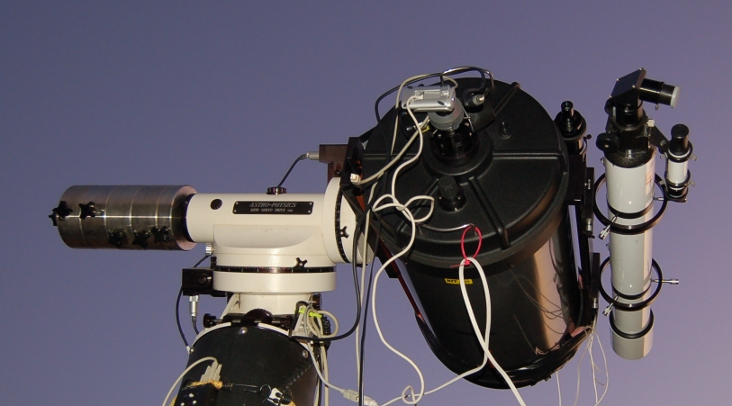
My plan is to use the Orion as a finderscope for the 14-inch. I've had trouble finding some faint targets when taking pictures with one of our CCD cameras on the 14-inch, because the field of view is so small. The Orion may give us a much larger field of view, yet still reach faint enough to match finding charts.
Let's compare the view from the 14-inch with that from the Orion. Our subject will be Jupiter, which was low in the southern sky last night. Here's a picture of Jupiter taken with a cheap ToUCam, a CCD-based web camera. Using the diameter of Jupiter to be 39 arcseconds, we find a plate scale of 0.59 arcseconds per pixel. The field of view for this 320 x 240 image is about 3.15 x 2.10 arcminutes.
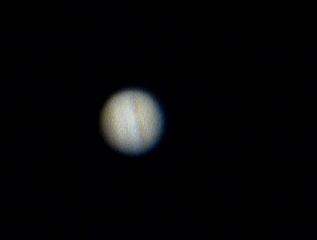
And here's a view of Jupiter with the same camera through the Orion:
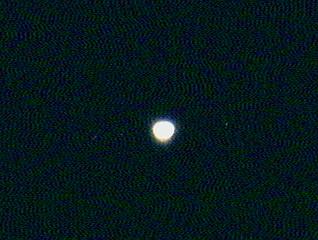
You can see four moons: from left to right, they are Callisto and Europa (very close together), then Io, Jupiter, and Ganymede on the far side. This field of view is much larger. Using a distance from Callisto to Ganymede of 323 arcsec, I derive a plate scale of 2.38 arcseconds per pixel, or a field of view of 12.7 x 8.5 arcminutes.
Finally, I put a video camera, the PC-164C, on the Celeston 14-inch telescope. Here's a picture of the TV screen displaying the resulting image:
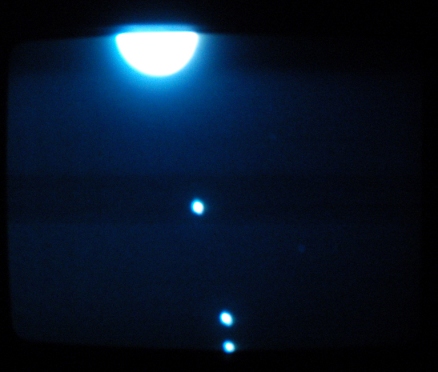
You can see Jupiter at the top of the screen, Io near center, then Europa and Callisto at the bottom. The distance from top to bottom of the screen is very roughly 180 arcseconds, or 3 arcminutes. This video camera creates an NTSC video signal, which is roughly 640 x 480 "pixels".
Let's put the results in a table:
Camera + telescope combinations
----------------------------------------------------------------------
telescope camera arcsec/pix field of view
(arcminutes)
Celestron 14-inch ToUCam 0.59 3.2 x 2.1
PC-164C ~ 0.38 4 x 3
Orion 90mm ToUCam 2.38 12.7 x 8.5
-----------------------------------------------------------------------
The ToUCam has a Sony ICX098BQ CCD inside; the sensor is a "1/4-inch" unit (I think that means 1/4 inch diagonally), with 659 x 494 visible pixels, each 5.6x5.6 microns. The PC-164C video camera has a larger Sony ICX254AL CCD, about 1/3 inch diagonally, with 510 x 492 pixels; but these pixels are not square, 9.6 microns wide by 7.5 microns high. So the PC-164C _should_ yield a larger field of view, and it does. Based on the sensor sizes, the ratio should be 3::4 for the ToUCam::PC-164C, and that matches my measurements well enough.
Just for fun, I used Registax to combine the images from one movie of about 1000 frames, taken with the ToUCam on the 14-inch. Below is the best combined image (on the left) and a picture of what we might expect to see from Stellarium (on the right). Hmmm. Not such a great match. Oh, well.
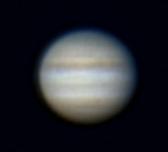
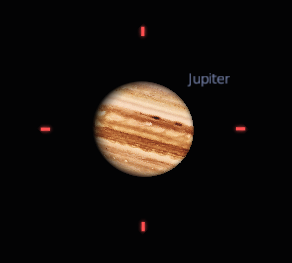
Last modified 8/26/2009 by MWR.